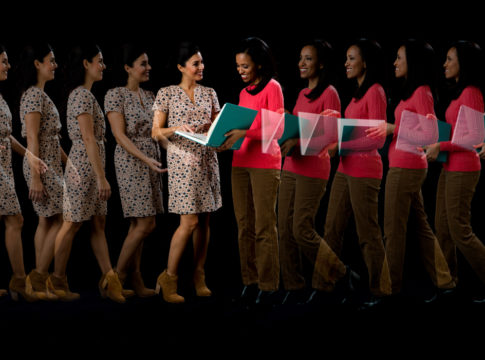New research shows teachers’ physical proximity boosts collaboration
Thoughtful classroom assignment can contribute to teacher development strategy
January 4, 2018—Innovative new schools across the country are experimenting with building designs to increase student learning and teacher collaboration. But the majority of instructors in the United States teach in a more traditional setting – the “egg crate” design, consisting of long hallways lined with self-contained classrooms. In a new article for Education Next, James Spillane of Northwestern University and Matthew Shirrell of George Washington University report that even within the limitations of traditional school building design, thoughtful classroom assignments can promote beneficial teacher interactions. Teachers are far more likely to speak with one another about their practice when they are assigned to nearby classrooms.
In each year from 2010 through 2013, Spillane and Shirrell surveyed all instructional staff from 14 elementary schools comprising one Midwestern suburban school district about their work-related interactions, school perceptions, and background information. They also studied the architectural floor plans of the schools and, using geographic information system software, overlaid floor plans with satellite images to trace and measure distances between teachers’ walking routes throughout the corridors of each building. The researchers found that teachers’ proximity to each other predicts their interactions throughout the day (see figure):
• For a pair of school staff with a 30% chance of interacting about math, being 78 feet (one standard deviation) farther apart in the school building decreases the chance of an interaction to 19%. If the pair is 156 feet farther apart (two standard deviations), the chance of an interaction falls to 11%.
• Similarly, if a pair of staff increases their overlap in “functional zones,” or the areas of a building they are likely to visit, by 121 feet (one standard deviation) their chance of interacting about math increases from 30% to 38%. Increasing functional zone overlap by two standard deviations raises the chance of an interaction to 47%.
Spillane and Shirrell also interviewed a subset of teachers and principals and found that, when discussing work-related interactions, the majority of respondents identify proximity—unprompted—as a reason for both purposeful interactions and chance encounters with colleagues. Exploratory analyses further suggest that proximity predicts instructional interactions rather than the reverse.
The researchers see broad implications for their findings. Intentionally placing highly effective teachers or coaches in central locations is a straight-forward and cost-effective way to promote their increased collaboration with colleagues. “School leaders also could place lower-performing or inexperienced teachers close to high performers, or place staff with complementary strengths and weaknesses in closer proximity,” they suggest.
To receive an embargoed copy of “The Schoolhouse Network: How school buildings affect teacher collaboration” or to speak with the authors, please contact Jackie Kerstetter at jackie.kerstetter@educationnext.org. The article will be available Tuesday, January 9 on www.educationnext.org and will appear in the Spring 2018 issue of Education Next, available in print on February 28, 2018.
About the Authors: James P. Spillane is the Spencer T. and Ann W. Olin Professor in Learning and Organizational Change at Northwestern University. Matthew Shirrell is an assistant professor of educational leadership and administration at George Washington University.
About Education Next: Education Next is a scholarly journal committed to careful examination of evidence relating to school reform, published by the Education Next Institute and the Harvard Program on Education Policy and Governance at the Harvard Kennedy School. For more information, please visit www.educationnext.org.



